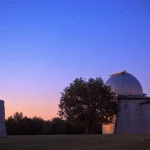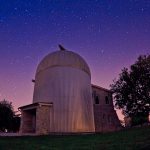Great news from the Croatian astronomical community!
Students and their mentors at the Višnjan School of Astronomy discovered no less than ten new asteroids in the Solar System this summer, reports Glas Istre.
Korado Korlević, head of the Science and Education Centre Višnjan in Istria and one of the most renowned asteroid hunters in the world, proudly talked about his students’ achievements. “It’s especially worth noting a group of our students discovered five celestial bodies on their own, while working on a project mentored by Enrico Pettarin from Italy that had them monitoring dangerous asteroids”, Korlević said.
Also known as little planets, the asteroids have a diameter of 1 kilometre each, and they belong to one of the oldest known constellations – the Aquarius. They have been spotted by a telescope installed at the new astronomical observatory in Tičan, as part of the summer school of astronomy held from August 12 to 26. The educational programme belongs to a larger project titled ‘Zajedno smo jači’ (We’re Stronger Together), and the experience in scientific research it provides will surely prove a considerable incentive for the students to decide for a career in science or technology.
“These bodies are located far away from us and they are currently insignificant, but we had the same view of the Pacific islands when they got discovered in the 18th century, and the whole world knows about them today”, said Korlević about the importance of the latest discovery.
Most discovered asteroids belong to the main asteroid belt that has a stable orbit around the Sun, and they don’t present any danger to the Planet Earth. Two objects have peculiar orbits: one from the Hungaria group of fast-moving asteroids situated close to Mars was marked as 2017 QF16, while the other, 2017 QX31, belongs to a group of slow-moving asteroids named Hilda that’s passing by Jupiter.
“The point of monitoring asteroids is to precisely establish their orbit and find out if they present possible danger for us, or to see if they have any potential to be used as raw material mines in the future”, concluded Korlević.
The observatory is about to get a new telescope and other equipment required to participate in supervision of potentially dangerous objects in the next five years, as part of the wider global astronomic community.









